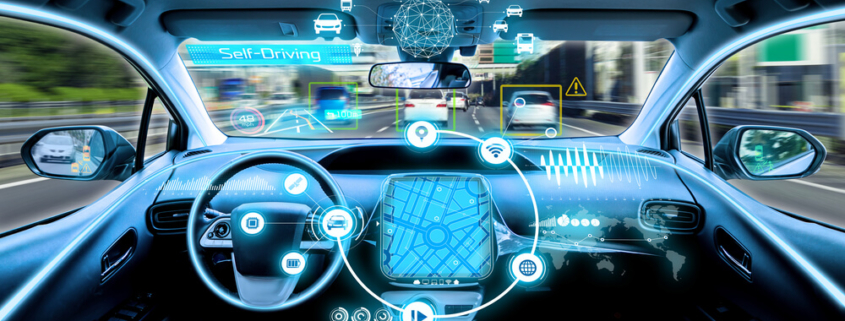Technology That Can Help You Avoid a Car Accident
Technology has become ubiquitous and indispensable in each and every sphere of our lives. There is no part of our lives left untouched by technology as it constantly strives to make things easier and safer for us on a daily basis.
The automobile industry has always been among the first mover in adopting and implementing the latest technologies available in the market, in their quest to enhance the performance of their product as well as safety for their customers.
Keeping in mind the fact that human error is among the topmost causes for car accidents, most auto manufacturers around the world continue to apply the latest technological advancements and innovations. In doing so, they assist motorists in reducing errors to ultimately bring down the number of injuries and fatalities due to car accidents. Some of the latest top technologies that can help prevent car accidents are:
Automatic Emergency Braking
Automatic Emergency Braking, or AEB, encompasses two brake assistance technologies, namely, Crash Imminent Braking and Dynamic Brake Support. Both of these will assist with the prevention of rear-end accidents which typically account for roughly one-third of all reported car accidents every year.
While Dynamic Brake Support does not help in averting a crash but comes into operation when the motorist applies brakes, Crash Imminent Braking helps slow down or stop the car when it detects an impending collision.
Lane Departure Warnings
Lane departure warnings show up inside a car if it starts drifting in its lane without a turn signal being on. The technology uses cameras to track the vehicle position within the lane markings. While it helps avert sideswipe accidents, some advanced versions can even take over the car controls from the motorist to keep it within the designated lanes.
Blind Spot Detection
No matter how well-designed today’s automobiles are; there will always be some blind spots. Some versions of the very useful blind spot detection send constant updates on the vehicle’s blind spots status, while others transmit warnings when the motorist puts the turn signal on.
Backup Cameras
Rearview cameras or video systems prevent collisions when a motorist is backing up their vehicle, often helping avoid the car running over a pedestrian or bicyclist passing by. The cameras turn on when the vehicle is in reverse, allowing the driver to see the area behind the vehicle, including any blind spots near the ground level.
The fact that backup cameras are mandatory on all cars manufactured after May 2018 goes to show how highly regarded this technology is, in spite of it being around for quite a while now.
Forward Collision Systems
Forward Collision Systems assist a vehicle in automatically measuring the distance between itself and the vehicle in front and slow it down to minimize the impact of an imminent collision.
Electronic Stability Control
Electronic Stability Control is a cutting-edge technology breakthrough that prevents cars from sliding out of control, in risky climates and adverse road conditions. It works by applying brakes to the wheels, thus reducing the engine power in case of a run-off-the-road accident. This proven technology has been very useful in preventing roughly half of car crashes or total rollovers in such conditions.
Autonomous Cruise Control
While cruise control has made long-distance drives more bearable for a long time, Autonomous Cruise Control is a more advanced version of this technology. The newer version of cruise control automatically adjusts the speed of a car to help maintain a safe distance from other vehicles.
This does away with the need to apply brakes constantly. An even more state-of-the-art version, known as Cooperative Adaptive Cruise Control collects information from mobile towers, satellites, and beacons, to calculate your car’s distance from other vehicles and adjust accordingly.
Vehicle-to-Vehicle Communication
Lately, it seems like the entire automobile industry is betting big on self-driving cars as the technology of the future. The technology, which is mostly in the development stage right now, needs communication between vehicles for its safe operation.
GPS coordinates and leading-edge sensors in different stages of research and development form the core of this futuristic technology that has the potential to hugely minimize a large number of injuries and fatalities in road accidents.
Interlock Devices
An attention detection device to monitor signs of intoxication or drowsiness in a driver has the potential to save thousands of injuries and deaths. Some prototype tools, like an in-vehicle breathalyzer, can lock down the vehicle ignition if the driver has a blood alcohol content above 0.08.
Cellphone Suppression
Some apps, such as Zoom Safer, screen text messages and calls to help drivers ignore their cellphone. The app blocks text messages and sends information to those texting you when you are driving, while announcing calls over a speaker.
Was Your Car Accident Caused by A Faulty Technology or Negligent Driver?
Even the most technologically advanced vehicle may end up in an accident. If a technological glitch or error results in an accident, you can seek to recover compensation from the vehicle manufacturer or the vendor of the technology.
At Smith Law Firm, our seasoned Alabama car accident lawyers have the skills, experience, and resources to handle cases involving vehicle defect and car accident lawsuits. If you or someone you love has suffered injuries due to a technology error, manufacturing defect, or someone else’s negligence; call us today at 334-377-1674 or contact us online for a free case review.



